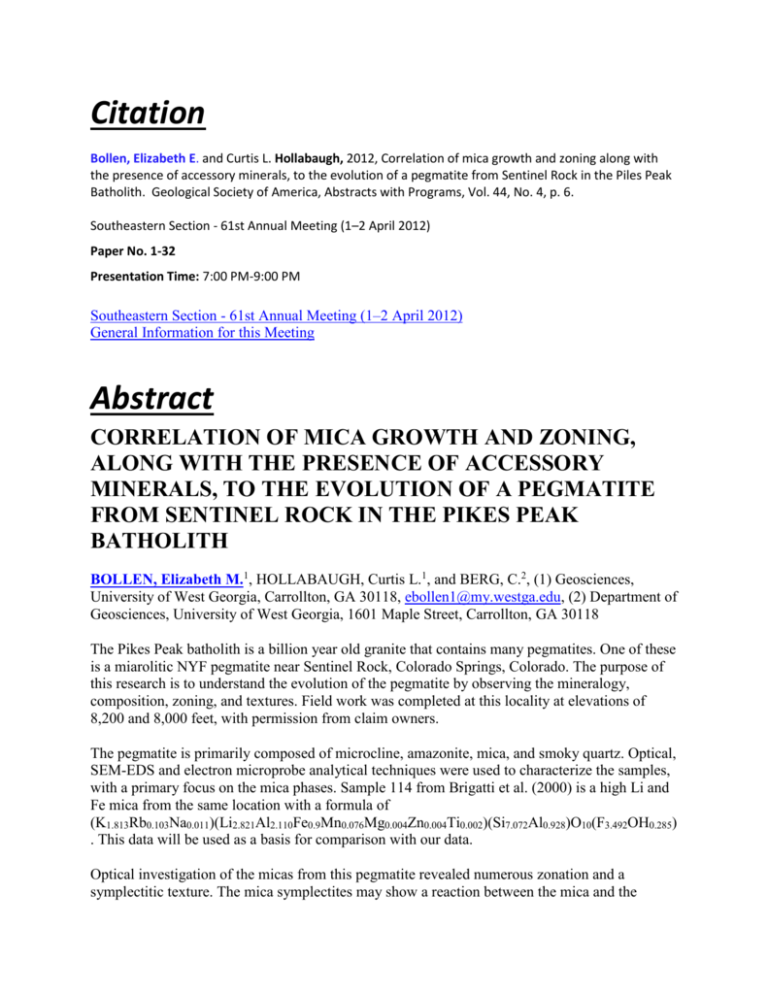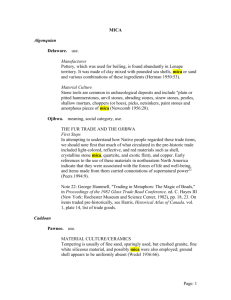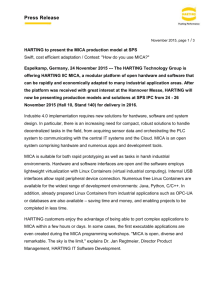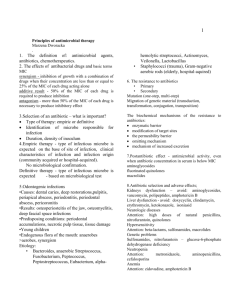Citation - The University of West Georgia
advertisement

Citation Bollen, Elizabeth E. and Curtis L. Hollabaugh, 2012, Correlation of mica growth and zoning along with the presence of accessory minerals, to the evolution of a pegmatite from Sentinel Rock in the Piles Peak Batholith. Geological Society of America, Abstracts with Programs, Vol. 44, No. 4, p. 6. Southeastern Section - 61st Annual Meeting (1–2 April 2012) Paper No. 1-32 Presentation Time: 7:00 PM-9:00 PM Southeastern Section - 61st Annual Meeting (1–2 April 2012) General Information for this Meeting Abstract CORRELATION OF MICA GROWTH AND ZONING, ALONG WITH THE PRESENCE OF ACCESSORY MINERALS, TO THE EVOLUTION OF A PEGMATITE FROM SENTINEL ROCK IN THE PIKES PEAK BATHOLITH BOLLEN, Elizabeth M.1, HOLLABAUGH, Curtis L.1, and BERG, C.2, (1) Geosciences, University of West Georgia, Carrollton, GA 30118, ebollen1@my.westga.edu, (2) Department of Geosciences, University of West Georgia, 1601 Maple Street, Carrollton, GA 30118 The Pikes Peak batholith is a billion year old granite that contains many pegmatites. One of these is a miarolitic NYF pegmatite near Sentinel Rock, Colorado Springs, Colorado. The purpose of this research is to understand the evolution of the pegmatite by observing the mineralogy, composition, zoning, and textures. Field work was completed at this locality at elevations of 8,200 and 8,000 feet, with permission from claim owners. The pegmatite is primarily composed of microcline, amazonite, mica, and smoky quartz. Optical, SEM-EDS and electron microprobe analytical techniques were used to characterize the samples, with a primary focus on the mica phases. Sample 114 from Brigatti et al. (2000) is a high Li and Fe mica from the same location with a formula of (K1.813Rb0.103Na0.011)(Li2.821Al2.110Fe0.9Mn0.076Mg0.004Zn0.004Ti0.002)(Si7.072Al0.928)O10(F3.492OH0.285) . This data will be used as a basis for comparison with our data. Optical investigation of the micas from this pegmatite revealed numerous zonation and a symplectitic texture. The mica symplectites may show a reaction between the mica and the feldspar or quartz, but as of yet this is undetermined. There are also well-defined pleochroic halos within the mica and are caused by zircon, monazite, thorite, and an undetermined Nbmineral. These minerals are almost always found inside the mica grains, with very few in the feldspar and quartz. Also present in the micas are fluorite inclusions that are oriented in the same direction as the mica cleavage. Scanning Electron Microscope analysis found that the micas change in composition from high Fe in the core, to low Fe in the rim. Smaller variations in composition include F, Mn, and Al. The SEM determined that the pleochroic halo minerals are zircon, monazite, thorite, and an undetermined Nb-mineral. There also seems to be an overgrowth associated between the thorite and zircon in which thorite is overgrowing on zircon. The electron microprobe confirmed and quantified the zoning of Fe, Mn, F, Al, and Si. The F content appears to be dominant over OH within each zone of the mica. Future data will be collected using ICP-MS to achieve a more definitive analysis of F as well as major and trace elements present inside the micas and amazonite, including Li and Pb which has been difficult to determine using the methods previously mentioned.











